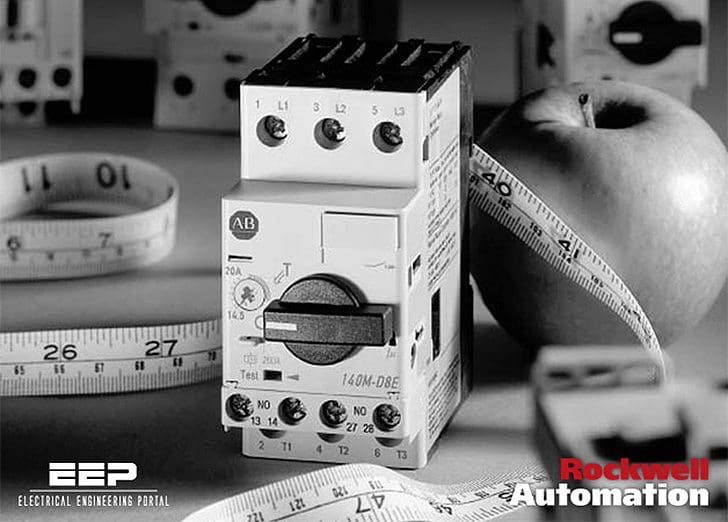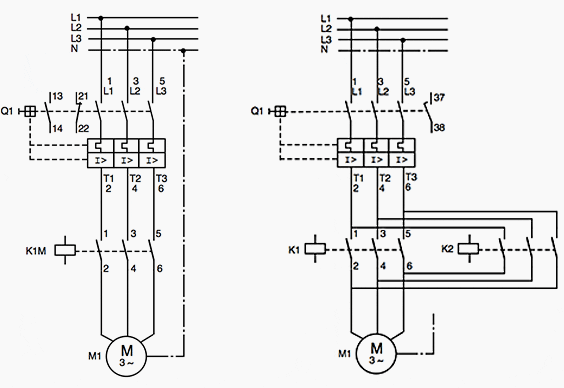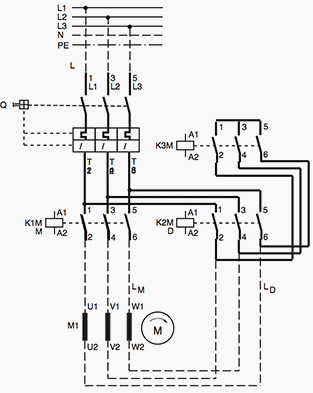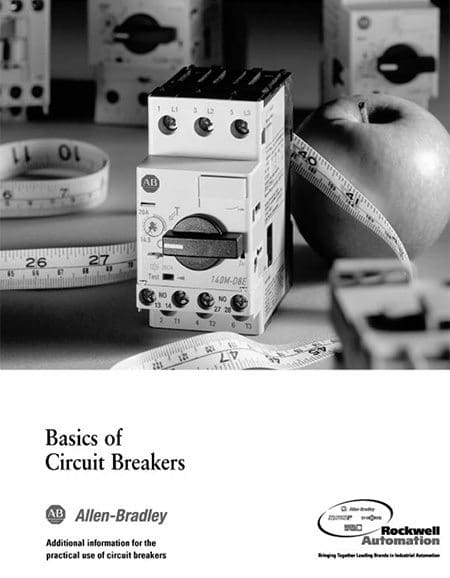Circuit breakers for motor protection
Continuous overload current leads to unacceptable temperature-rise, accelerated ageing of the insulating material, increased wear and ultimately faulty operation of the connected equipment.

Similar to a bimetallic thermal overload relay, a circuit breaker is suitable for:
- Starting and running under normal service conditions of
– low voltage motors from 0.02 to …kW. - With additional devices also for special starting and running conditions such as:
– Motors in intermittent periodic duty or with fluctuating load
– Soft starter (protection of motors with phase controlled soft starting).
– Frequency converter (speed control of three phase motors).
Protection of motors with direct-on-line starting
A normal three-phase motor is sufficiently protected by the combination of a contactor and a circuit breaker with motor protective characteristic.

As the full rated current of the motor flows through the circuit breaker, the current setting of the thermal release is equal to the motor rated current.
Protection of motors with star-delta starting
With one circuit breaker
In the case of a star-delta starter, the upstream circuit breaker takes over the motor protective function and the two thermal overloads connected in series with the motor windings become superfluous. The cross-section of the connecting leads to the motor must be selected on the basis of the rated current of the overload protective device (current setting of the circuit breaker).

The current setting of the thermal release of the circuit breaker is equal to the actual rated current of the motor. The calculation of the rated current for the setting of the current scale with the help of the factor √3 (=1,73) is no longer necessary.
| Title: | Basics of Circuit Breakers – Additional information for the practical use of circuit breakers – Rockwell Automation |
| Format: | |
| Size: | 1.02 MB |
| Pages: | 102 |
| Download: | Right here | Video Courses | Membership | Download Updates |



Thanks.
Great being an engineer and associating with you